Tree Pollen Allergy Symptoms and Types
Tree pollen is generally the first seasonal allergen of the year that can cause your symptoms to emerge – usually around spring when most plants begin to flower.
In some places, trees can start releasing their pollen as early as January, with the spread lasting until June.
Trees produce light, dry pollen that can be carried by the wind for miles. So even if you live in a built-up city, it can still blow your way and trigger an allergic reaction.
Learn about tree pollen allergies, how to lower the chances of a reaction, which trees to be aware of, and useful ways you can try to relieve or reduce your symptoms.
What Are Tree Pollen Allergy Symptoms?
An allergy to tree pollen (or other types of pollen, for that matter) is officially known as allergic rhinitis, or “hay fever”1. When your body is exposed to a certain type of pollen, it overreacts, releasing the chemical histamine to protect against the allergen. This excess release of histamine can however cause tree allergy symptoms, such as1:
- Runny nose
- Coughing and sneezing
- Nasal congestion
- Itchy nose, eyes and/or roof of mouth
- Itchy throat2
If you have asthma, exposure to tree pollen can also aggravate symptoms – such as coughing and wheezing3.
These symptoms can be very similar to those you might experience with an allergic reaction to grass or weed pollen. However, if you get symptoms in the first few months of the year, it’s more likely that tree pollen is the culprit! Find out more with our pollen allergy guide.
What Types of Tree Pollen Can Trigger Allergies?
Each species of tree produces its own type of pollen. Depending on your body, you may only be allergic to one specific type, or you might experience an allergic reaction to two, three, four or more.
In some tree species, only the male trees cause a problem, as their female counterparts don’t have any pollen at all.
Some of the worst trees for allergies are found across the country in different places and have pollen that commonly causes a reaction. These can include:
- Alder – Red and white alder trees are found across North America. Because of similar proteins in their pollen, if you’re allergic to alder pollen you may also suffer pollen food allergy syndrome – meaning you might have a reaction when eating celery, cherries or apples too
- Birch – A birch pollen allergy is one of the most common as they grow across most of the US and are often found in yards and gardens. One birch tree can produce five million pollen grains
- Cedar – If you have a juniper allergy, you may experience “cedar fever”, as different types of cedar and juniper trees are closely related. The likes of mountain cedar trees (or ashe juniper trees) can produce pollen in high concentrations after a cold front
- Cottonwood – These fast-growing poplars are native to North America and can trigger a cottonwood allergy when they pollinate. This happens before they release the white fluff they’re known for, usually in late winter/early spring
- Elm – Most elm trees flower in January and February through to April, while in the southern states some pollinate in late summer and sometimes into November
- Maple – Pollination can happen early in the year for sugar maples and some species, while in western US states certain trees flower in June and July
- Oak – Oak tree pollen is one of the main types that causes allergic reactions, as these trees produce large amounts of pollen which is then carried by the wind. They’re found throughout the US and usually pollinate in spring
- Pine – A pine tree allergy is fairly uncommon, but pine nuts and pine pollen have been known to release allergens in spring when these trees pollinate4
- Poplar – There are many different species of poplar trees, with the season for poplar pollen usually around March and early spring
- Willow – Similar to a cottonwood allergy, the white fluffy cotton that blows off willow trees can trigger allergies
Use our tree pollen allergy guide to recognize the types of trees that may trigger your allergy symptoms, depending on the time of year and your location.
LATER
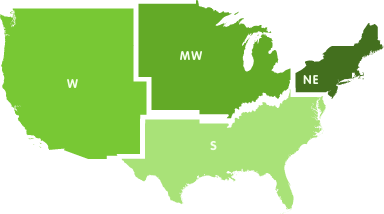
SOONER
TREE POLLEN IS THE FIRST SEASONAL ALLERGEN OF THE YEAR. IN THE SOUTH, TREES START RELEASING THEIR POLLEN AS EARLY AS JANUARY UNTIL JUNE.

LEARN TO RECOGNIZE THE TYPES OF TREES THAT TRIGGER YOUR SYMPTOMS. CHECK WHAT'S IN THE AIR WITH THE ZYRTEC® ALLERGYCAST® APP.
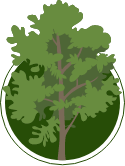

ALDER
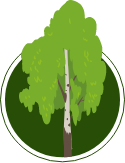

BIRCH
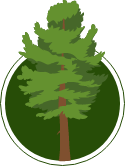

CEDAR
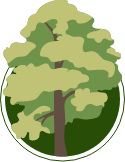

COTTONWOOD
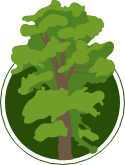

ELM
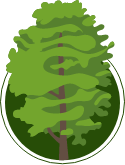

MAPLE


OAK
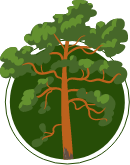

PINE
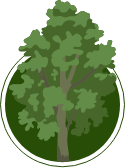

POPLAR
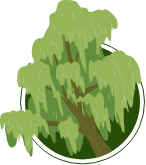

WILLOW

How to Prevent and Alleviate Tree Pollen Symptoms
You can’t completely prevent a tree pollen allergy, but you can take action to reduce your chances of exposure – and developing symptoms:
- Consider removing any of the trees that affect you from your property
- Wear glasses to protect your eyes when outside doing yard work, walking through the park or anywhere else near trees
- Stay indoors and close your windows on windy days when pollination levels are more likely to be high
- Check the monthly pollen allergy guide to plan ahead for months that may have the highest levels
There are also various types of tree pollen allergy treatment you can try to relieve your symptoms.
These can include5:
- Allergy shots – Also known as immunotherapy, these shots contain a small dose of tree pollen, to help stimulate your immune system so that it builds up a tolerance to the allergen, causing symptoms to reduce over time
- Antihistamines – Over-the-counter medicine such as ZYRTEC® products can work to relieve symptoms including sneezing, itching, watery eyes and a runny nose
- Corticosteroids – Often sold as a nasal spray, these can reduce inflammation to ease swelling, itching and redness caused by an allergic reaction
- Decongestants – Temporarily help relieve a stuffy, blocked nose
- Combination medicines – Some medication such as ZYRTEC-D® contains both an antihistamine and decongestant
FAQs
How long do tree pollen allergies last?
Tree pollination can start in January and last until June in some cases. How long your allergy symptoms last depends on the species of tree that causes your allergies, its normal pollination season, and where you live (including how many such trees there are in your local area).
What time of day is tree pollen highest?
The tree pollen count is normally at its highest in the morning, often between 5am and 10am. During this time it may be best to stay indoors to avoid exposure. However, it can vary depending on the type of pollen, weather and area.
References:
- https://www.mayoclinic.org/diseases-conditions/hay-fever/symptoms-causes...
- https://www.health.harvard.edu/staying-healthy/treatments-for-post-nasal...
- https://acaai.org/allergies/types-allergies/pollen-allergy
- https://acaai.org/allergies/types-allergies/pine-tree-allergy
- https://pubmed.ncbi.nlm.nih.gov/8414453/
- https://www.mayoclinic.org/diseases-conditions/hay-fever/in-depth/season...


